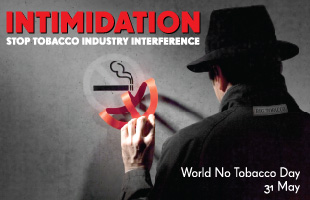May 30, 2012
From the LA Times:
A proposed $1-per-pack tax increase on cigarettes remains highly popular among California voters, but they are split over whether to change the state’s 22-year-old term limits law, according to a new USC Dornsife/Los Angeles Times poll.
The two measures will appear on Tuesday's statewide primary ballot.
The tobacco tax, which will be before voters as Proposition 29 on the June ballot, is backed by 62% of state voters, while just 33% say they oppose the initiative. If passed, the measure would increase levies on other tobacco products in addition to the $1 increase on cigarettes.
The money generated, about $850 million per year, according to the state Legislative Analyst's Office, would pay for more cancer research and help law enforcement fight illegal cigarette sales.
The strong support comes despite a $40-million campaign by tobacco companies, which have run ads criticizing the measure for creating a new state bureaucracy and the fact that it would do nothing to help close California's estimated $15.7-billion budget deficit.
May 30, 2012
We just published “Tobacco Control Legislation in Costa Rica (1971-2012): After 40 Years of Tobacco Industry Dominance, Tobacco Control Advocacy Succeeds.” The full report is available at free at http://escholarship.org/uc/item/8029s7xw
EXECUTIVE SUMMARY
Between 1971 and 1985, Philip Morris International (PMI), through its subsidiary Tabacalera Costarricense (TC), and British American Tobacco (BAT), through its subsidiary Republic Tobacco Company (RTC), successfully blocked several laws to restrict tobacco advertising and supported weak industry‐inspired executive decrees, resulting in minimal advances for tobacco advertising restrictions.
During the mid‐to‐late 1980s and early 1990s, the Ministry of Health capitalized on the public’s increased awareness of secondhand smoke (SHS) and issued nine advanced (for their time) smoking restriction decrees between 1986 and 1989, as well as assisted other Costa Rican health institutions to introduce Costa Rica’s first bill to prohibit smoking in workplaces and public places and eliminate tobacco advertising in 1992.
May 30, 2012
I asked the CDC what they thought of the story in the Sacramento Bee on the fact that California is not spending much on tobacco control.
Here is the email I got back. (Miller is the No on 29 person that the Bee quoted.)
From:McAfee, Timothy (CDC/ONDIEH/NCCDPHP) [mailto:[email protected]]
Sent: Wednesday, May 30, 2012 2:27 PM
To: Glantz, Stanton A
Subject: RE: How Sac Bee read your MMWR paper last week
Thanks for sending this Stan.
Miller seems to be arguing that since there was not enough done in the past because the revenue wasn’t sufficiently dedicated to tobacco control, that therefore nothing should be done now because the legislature will use the $$ for non-tobacco control purposes. But then at the end, sounds like she is making the opposite argument, saying that it is an issue that the $$ isn’t under legislative control.
The article also doesn’t point out two things that are factual:
May 30, 2012
We have shown that 30 minutes of exposure to secondhand smoke at levels about like experienced in a bar damage and compromise the functioning of arteries in a way that increases the likelihood of a heart attack.
Recently Paul Frey and others here at UCSF published a paper examining what happened to the ability of arteries to function at lowere levels of secondhand smoke. We exposed healthy people to a range of relatively low concentrations of aged secondhand smoke (SHS), similar to those encountered commonly in the community and found that short-term exposure to real-world levels of aged SHS for 30 min resulted in a concentration-dependent decrease in endothelial function as measured by how well arteries dilated in response to demands for increased blood flow (flow-mediated dilation).
There was no evidence of a threshold for this effect, i.e., it was detected even as the exposures of SHS went down.
This study adds to the evidence that even a little secondhand smoke is dangerous.
May 29, 2012

The No on 29 campaign is a great example of the kind of "tobacco industry interference" that the WHO is highlighting in its materials for World No Tobacco Day.
The WHO's list of "Information sheet on tobacco industry interference" could have been written about the No on 29 campaign:
1. Manoeuvering to hijack the political and legislative process
The tobacco industry has been highly resourceful in undermining governments’ efforts to protect public health. Tobacco companies have become expert in creating and exploiting legislative loopholes and manoeuvering with lobbyists to effectively influence law-making.
2. Exaggerating the economic importance of the industry
